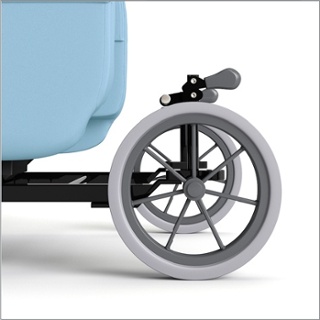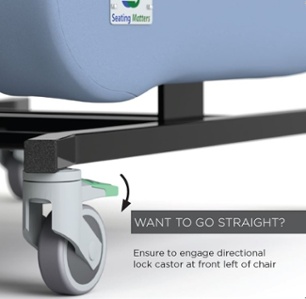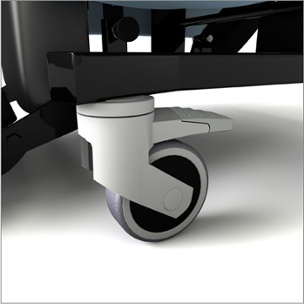People often enquire about the transportation and mobility of Seating Matters chairs. Please find below some advice to make transportation and movement of the Seating Matters chair easier in various locations.
All Seating Matters chairs are on wheels as standard for easy mobility throughout a home or care facility. There are some variations of wheels available to make this job easier and more suitable for different surfaces.
We are often asked if Seating Matters chairs can be taken in a moving vehicle.
Our chairs are not crash tested, and some transport authorities require this to allow the chairs to be transported in a moving vehicle. However some don’t require this. The best advice we can give is to refer to your local guidelines and laws before using a Seating Matters chair in transport.
Whilst Seating Matters chairs are primarily for indoor mobility they can be taken outside if the path is suitable, to a garden or outside area to allow the patient to benefit from increased stimuli provided from a new view, some fresh air and a chance to enjoy the great outdoors.

Tips
Some additional accessories can help to make this task easier when transporting over larger distrances.
- Consider adding stroller wheels to your chair which can help.
- If the chair has tilt in space as a function it may be easier to move the chair whilst in slight tilt if this is clinically appropirate and safe to do so.
- For movement of the Bariatric Sorrento, the added powered feature of Drive Assist™ makes this task a much easier task for the caregiver, reducing manual handling.
Manoueverability indoors is relatively straighforward since the chairs are all on wheels, allowing the patient to be moved from room to room to encourage social interaction and inclusion. The Seating Matters chairs can fit through a standard doorframe.
Tips
- Sometimes reverse is easiest motion for moving through doorways.
- Consider adding twin castors to your chair which can help improve manoeuvrability indoors especially over carpeted surfaces.
- Make sure brakes are applied when not in motion and when doing transfers in and out of the Seating Matters chair.
- If the patient has a lap belt we recommend for their own safety that this is used during movement of the chair.
- Please ensure patient’s feet are safely loaded on the footplate provided during any movement of the patient within the chair.
- Use the directional lock castor (located on the wheel at the front left of the chair) when travelling in a straight line to help with steering.
Get to know the wheels of your chair and the functions they offer to make movement easier:

1 directional lock castor located at the front left of the chair.

2 braking castors located on the two back wheels of the chair.
1 non braking castor located on the front right of the chair.
If you have any queries regarding wheels or accessories to assist you when moving your patient in the chair please contact technical@seatingmatters.com
** This post was originally published on http://blog.seatingmatters.com/faq-transporting-seating-matters-chairs

